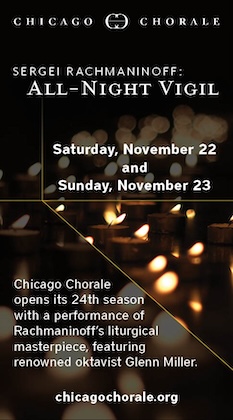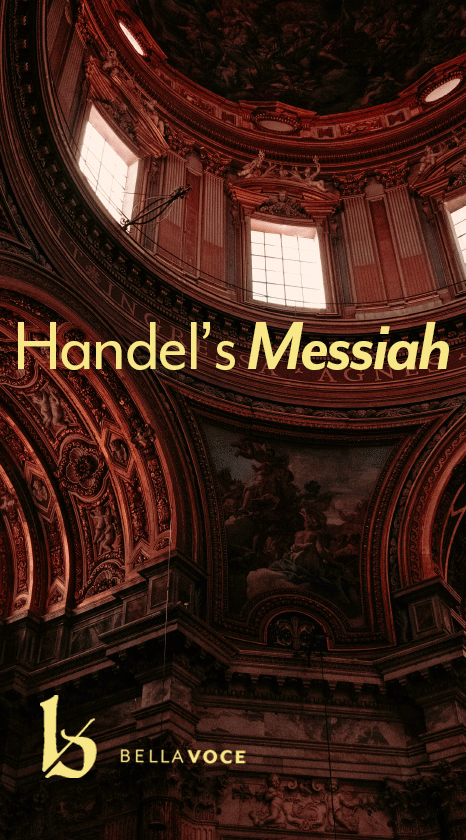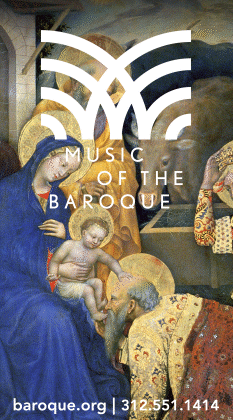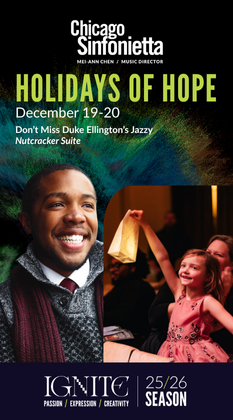Performances
Viet Cuong’s energetic music in the spotlight at Northwestern
Northwestern University’s Symphonic Wind Ensemble teamed up with acclaimed Chicago-based ensembles […]
Chen leads CSO in an elegant, collegial “Four Seasons”
After two weeks of vivid concerts under music director emeritus for […]
Muti, CSO serve up graceful mix of Stravinsky, Brahms, and Spanish guitar
For his final Chicago Symphony Orchestra concerts of 2025, Riccardo Muti […]
Articles
Critic’s Choice
Gluck: Orfeo ed EuridiceDame Jane Glover/Music of the BaroqueSeptember 14-15 Music […]
Concert review
Welter’s mellifluous Mozart highlights Elmhurst Symphony program

The title “Classical Giants”—which graced the Elmhurst Symphony Orchestra’s Sunday afternoon program at the Elmhurst Christian Reformed Church—might lead one to expect works of monumental length. But this was, in fact, just an offbeat way of referring to the stature of the program’s two composers: Mozart and Beethoven.
Music director Stephen Alltop prefaced the performance of Beethoven’s Egmont Overture by first giving a rough outline of the plot of Egmont and then having the orchestra play the moment in the overture that may represent a blade decapitating the hero.
Although Alltop’s remarks emphasized Beethoven’s sense of drama, the performance’s virtues lay elsewhere—in the wind solos (often the Elmhurst Symphony’s greatest strength) and the conductor’s keen sense of balance. Textures were clear throughout, even in the victorious coda in which musicians are apt to sacrifice precision for exultation.
But the drama was lacking. The string playing felt static and soft-edged, and the crucial blade seemed more butter knife than executioner’s axe.
If there was any concern that this boded poorly for string phrasing in general, the orchestra’s rendition of Mozart’s Oboe Concerto put that to rest. Alltop succeeded in eliciting subtle gradations of articulation and dynamics.
Of course, the highlight of the concerto was the solo work of William Welter, principal oboe of the Chicago Symphony Orchestra. Although his dynamics rarely climbed above mezzo-forte, he more than compensated by maintaining a warm, singing tone. His approach to phrasing tended toward mellifluousness rather than micromanaging, which made his rare bits of point-making—such as at the end of his third episode in the first movement or the transition in the finale—register even more vividly.
Audience members who wondered why there was a harpsichord sitting onstage got their answer when Welter and the orchestra closed the first half by giving a tranquil rendition of the Sinfonia from J.S. Bach’s Cantata No. 156 as an encore, with Alltop at the keyboard.

The concert’s second half was devoted to Mozart’s Symphony No. 39, K. 543, which has been dwarfed in reputation by its two successors (No. 40 and the Jupiter), but is full of greater humor and more timbral variety than both of them.
The firm but not forceful accents Alltop asked for in the first movement gave an appropriate sense of pomp and ceremony. In the second movement, the stormy, minor-key episodes surged forward with welcome urgency, though the variations of the main theme could have been better differentiated.Things picked up in the trio of the third movement, which spotlighted the orchestra’s graceful clarinets.
They joined the other winds in being the stars of the finale, which was full of color if lacking the kind of whirlwind energy the music requires. Alltop, unusually, took the repeat in the final movement, which made Mozart’s witty, abrupt coda especially effective, the comic timing drawing a chuckle from the audience.
The Elmhurst Symphony Orchestra will continue their season January 18, 2026 with a program titled Appalachian Spring, celebrating the 250th anniversary of the American Revolution. elmhurstsymphony.org
Posted in Performances
No Comments
Calendar
November 20
Lyric Opera
Mascagni: Cavalleria rusticana
Leoncavallo: Pagliacci
Yulia […]
News
Winberg to step down as CEO of Grant Park Music Festival
It is the end of an era for the Grant Park […]






